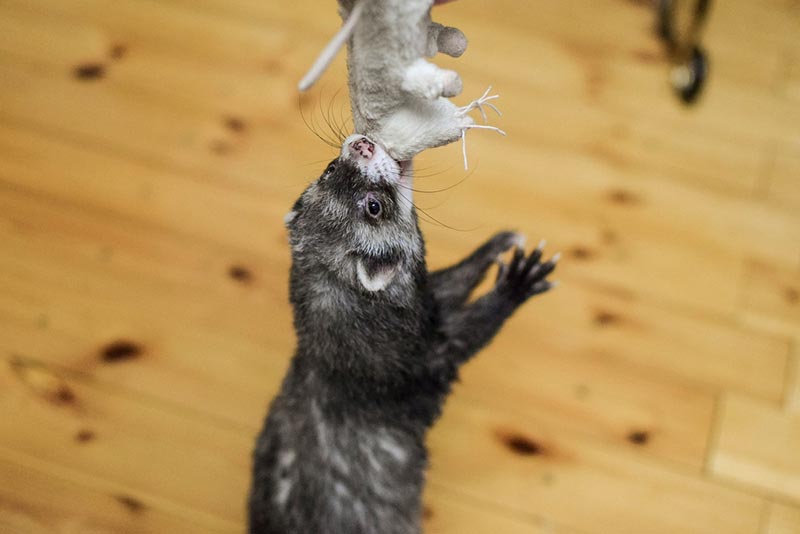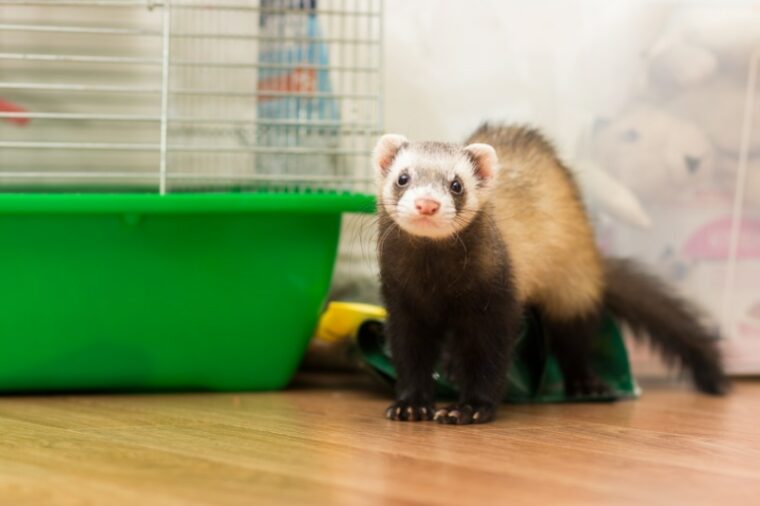
Domesticated ferrets are not wild animals. The modern ferret (Mustela putorius furo) is thought to be related to the European Polecat (Mustela putorius), a wild predator. They’ve undergone a process of domestication for at least 2,500 years, which has led to them being different from their wild cousins.
For this reason, domesticated ferrets likely cannot survive in the wild. They were bred to live alongside humans as ratters, similar to cats. Their main purpose was hunting rabbits and other small animals, keeping them from food storage. In our modern world, this purpose is no longer needed (for the most part). We have many other ways to keep our food safe. However, even a hundred years ago, keeping rats out of the grain stores was vital for survival.
There aren’t any large, long-term ferret colonies recorded. They can technically live in the wild, and some may do a decent job at hunting. Their lifespan would be far lower than when domestic, and they may wreak havoc on local wildlife.
Some species of Mustelidae are commonly referred to as “wild ferrets,” though this is a misnomer.
“Wild” Ferret Species
There are a few species sometimes labeled as “wild ferrets.” However, neither of these is a wild version of the domestic ferret.
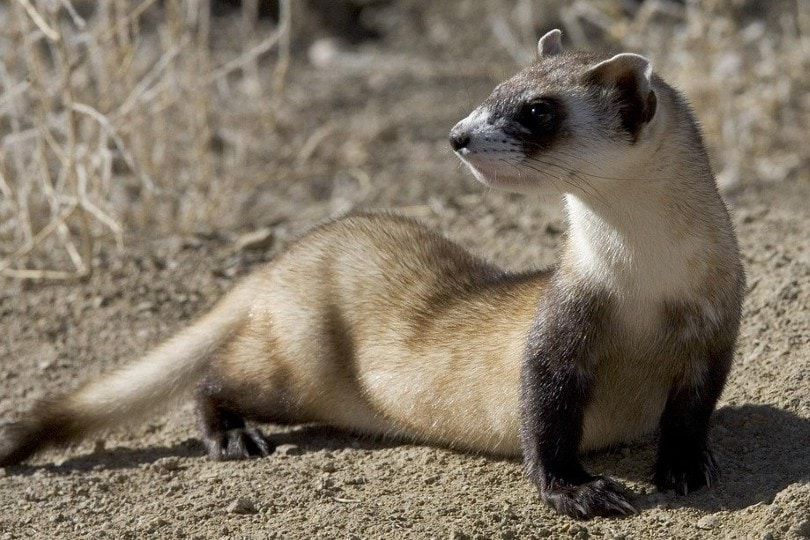
The Wild Black-Footed Ferret
You may have heard of the black-footed ferret, a wild ferret species. However, this ferret is only distantly related to domestic pet ferrets. They’re a different species and genetically different. They aren’t domesticated and would do rather poorly in a human household. This ferret isn’t a wild version of our domestic ferrets.
You cannot always trust the official names of species, as is quite obvious in this example. Don’t try to bring a black-footed ferret (Mustela nigripes) into your home, and don’t expect a domestic ferret to have the same survival skills as a black-footed ferret.
New Zealand’s Ferrets
New Zealand is the only country in the world that boasts a “wild” ferret population. However, this truth is only partial. The feral ferrets in New Zealand are derived from farmed ferrets that were brought over from Europe in the 1880’s. They were released and escaped from ferret farms and established feral populations. Therefore, it isn’t wholly a domestic ferret and wouldn’t do well inside our modern homes.
They have survived extremely well in the wild and are now considered a pest. The ferret is labeled as invasive and doesn’t play nicely with the island’s wildlife. They have led to the decline in native bird species due to predation.
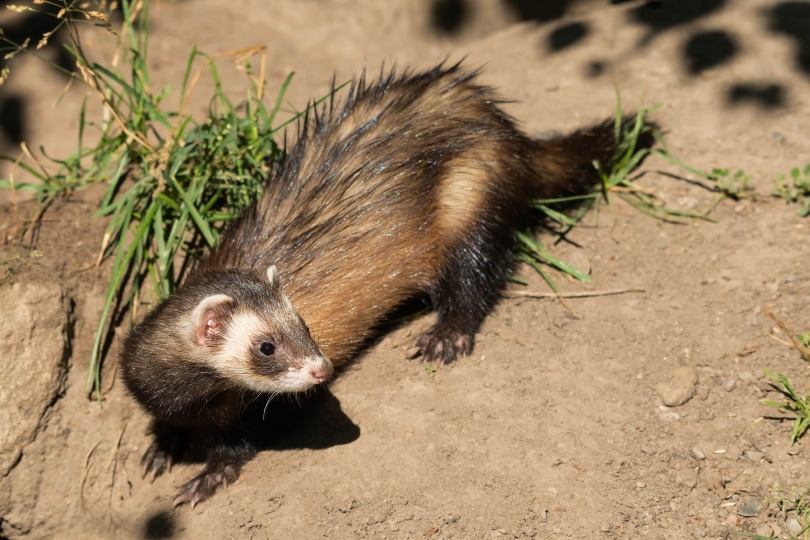
Feral Ferrets
Occasionally, a ferret will find itself in the wild without a human caretaker. Sadly, some owners believe that ferrets can survive and “release” them. Other times, a ferret may escape from their home and become lost. Ferrets rarely have successful litters in the wild, so most feral ferrets were in a home at some point.
Like other feral animals, ferrets will rely on their instinct to survive when in the wild. They will usually have been kept in domesticated situations and used to all their needs being tended to by human caretakers. They have honed their hunting and survival skills.
Ferrets may survive for a time by hunting, especially in rural or suburban areas. However, they’re often unlikely to do this for long, especially when winter comes. Most ferrets perish pretty quickly when without a human caretaker. Therefore, large ferret colonies don’t exist, as there aren’t enough ferrets to create them.
While these ferrets technically can live in the wild for a time, they don’t establish a breeding population. Therefore, they aren’t true “wild ferrets.”
European Polecats
European polecats are wild weasel-like animals that look somewhat like a ferrets. However, they are not domesticated. It is thought that they are likely the ancestors of modern ferrets and are hence able to interbreed. This species was crossbred with the domestic ferret to create the ferrets in New Zealand. They’re very good at surviving in the wild and don’t require human interference like a domestic ferret.
Of course, these polecats would not do well inside our home because they aren’t domesticated.

How Long Can a Domesticated Ferret Live in the Wild?
Domesticated ferrets typically don’t live outside for more than a month without a human caregiver. This span is likely to be even shorter in urban areas, as there are many dangers for a ferret. Wild weasels and relatives usually eat small rodents, frogs, birds and even snakes. In rural areas, the ferret may be able to locate prey items. However, many larger predators may consider the ferret a tasty snack.
Furthermore, ferrets aren’t adapted to many environments they’re released into. Therefore, if they survive the warmer months, they often can’t keep warm when winter rolls around.
While ferrets are often considered more “wild” than cat or dog, due to their similar appearance to wild relatives: in truth they were bred to be a domestic species.
Can You Release a Ferret?
No. Ferrets are a completely domesticated species, and must not be released into the wild.
Furthermore, it is illegal in many areas to release a ferret. It’s inhumane and often counts as animal cruelty. Furthermore, ferrets can harm wildlife as they attempt to stay alive and aren’t native to any area. They only live inside humans’ homes.
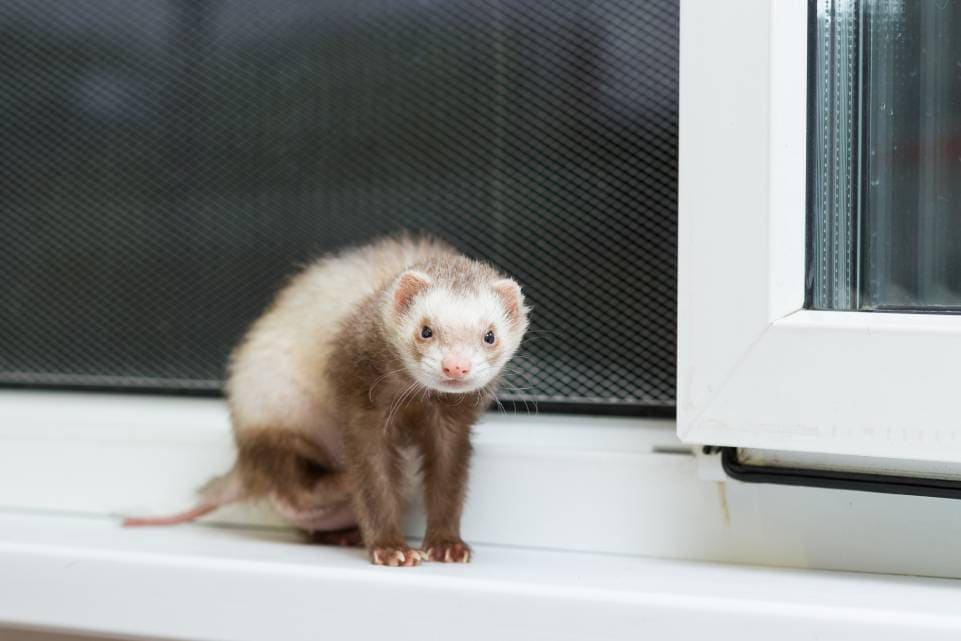
Conclusion
Ferrets may be less common pets than cats or dogs. However, they’re completely domesticated and not found in the wild. Thousands of years ago, humans domesticated ferrets from similar wild species—just like they domesticated cats and dogs. Ferrets evolved to live alongside humans, typically fulfilling the same roles as cats.
Today, they should not live in the wild and aren’t native to any area. Their “natural environment” is within human homes. Many still possess hunting instincts, as they were bred to keep small mammals from grain stores. However, they usually have not had practice at using their hunting powers and may not effectively be able to feed themselves. Plus, ferrets aren’t adapted to many environments they’re kept in today.
While you occasionally hear people refer to “wild ferrets,” these animals aren’t wild versions of our domestic ferrets. Instead, they belong to a completely different species adapted to living in the wild.
Releasing a ferret into the wild results in the animal dying due to starvation, predation, or exposure. Furthermore, it is illegal in most areas.
Featured Image Credit: Fayzulin Serg, Shutterstock


